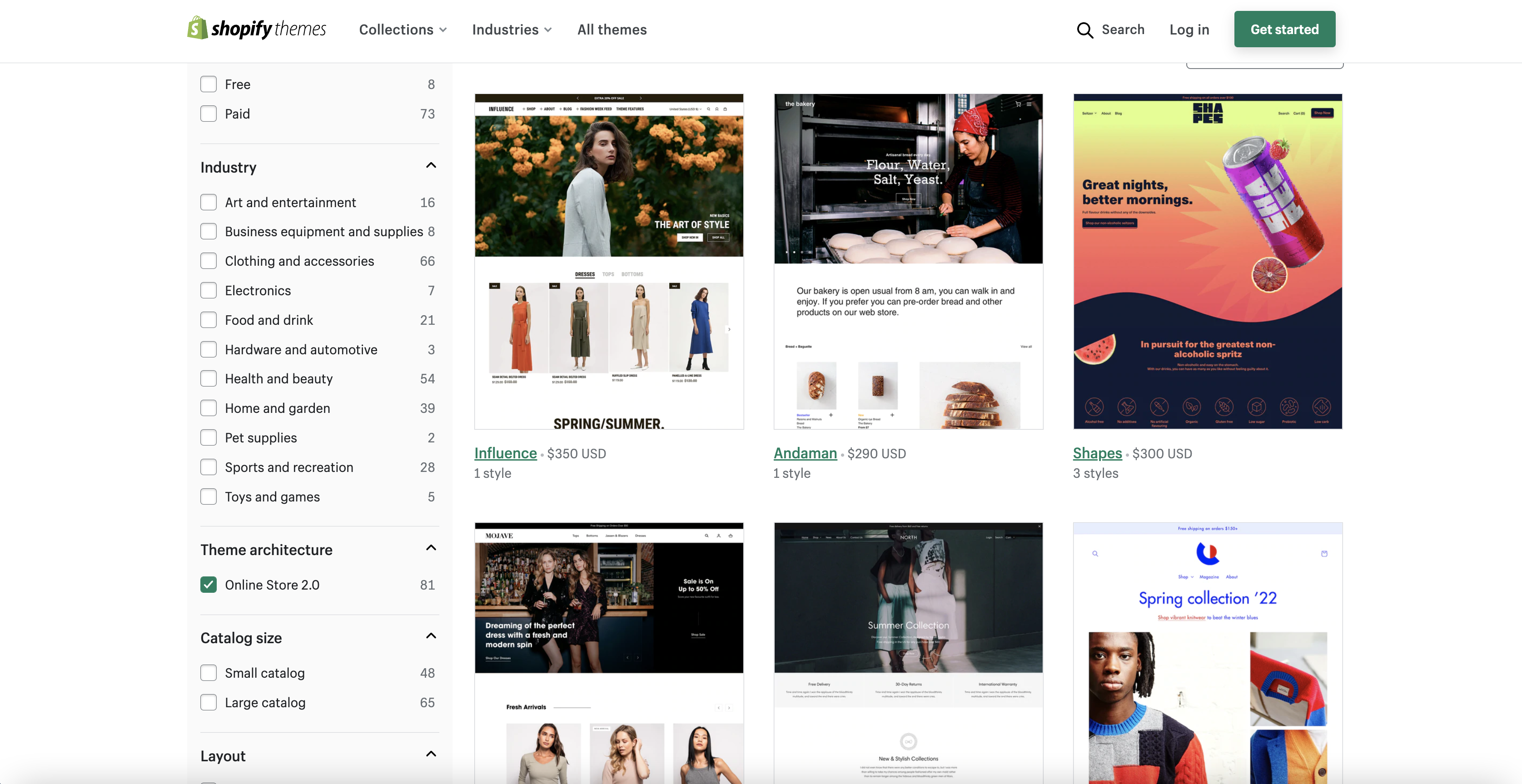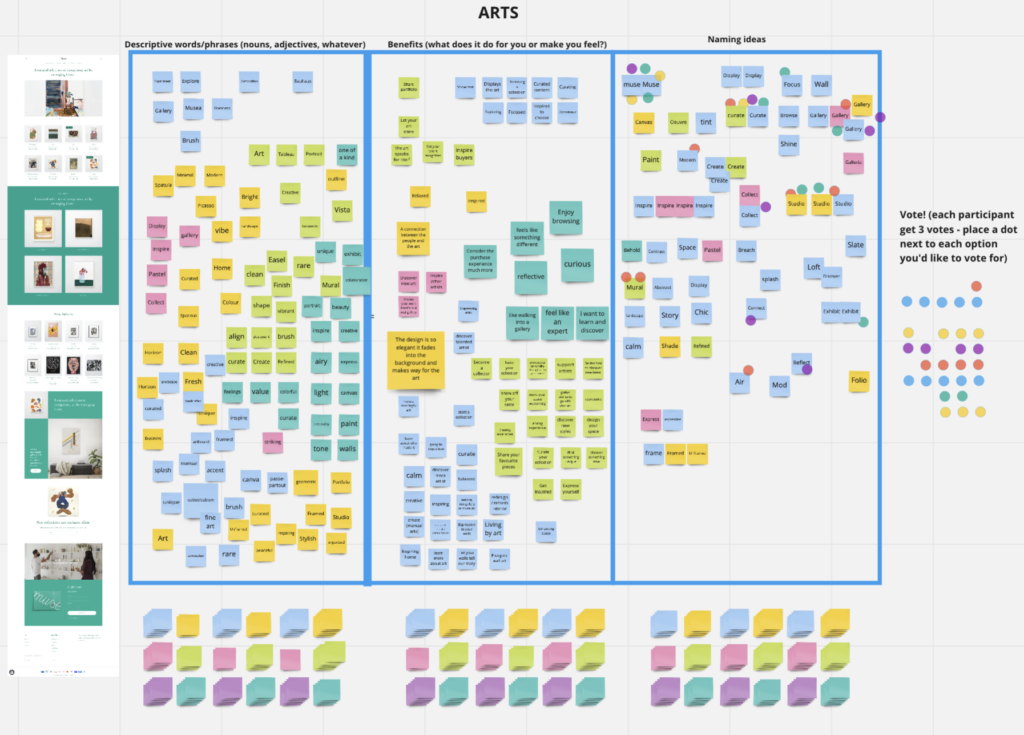Drive adoption of Online Store 2.0 themes, in particular the new free themes, among new merchants.

Your theme is a fundamental tool when creating your online store with Shopify. It creates a brand identity and determines a buyer's experience. It can also establish a conversion flow. Themes give merchants access to great features developed by Shopify. That includes Local Delivery, Automatic Discounts, Currency and Language Selection, and many more.
On the Shopify Theme Store there are free and premium themes. Shopify's dedicated Theme Store Partners build premium themes. My team was launching twenty free themes in the next year.

The free themes were different from previous releases. They shared the same UX features meaning their only difference was the art direction. They also leaned into industry-first design more than ever before. This decision created a disadvantage for the Shopify Theme Partners. They also wanted their themes to share a common code base to save time on development. There were risks related to this decision. For example, merchants may not pay for premium themes if they perceive them to be less valuable. It perpetuated a discussion around free vs premium themes that we were trying to avoid.
The goal was to encourage the adoption of Online Store 2.0 themes so we wanted to appear as a united theme store. We also needed to avoid a drop in Shopify GMV when the vintage themes were sunset.
To adopt Online Store 2.0, merchants need to migrate content or update the code of their existing theme. This is a lot of work and could create a sense of panic.
On this project, I ran a series of risk assessments with senior stakeholders and the team.
Should we be transparent with merchants that all free themes share the same features?
Should we allow Theme Store Partners to also create themes that also share the same code?
Should we position free themes around industry-first design if they are in fact the same?
Should we communicate to merchants that vintage themes are being sunset?
Should we encourage merchants to adopt an Online Store 2.0 theme at all?
After a series of risk assessments over several weeks, we decided to focus our GTM of free themes on new merchants. This would mitigate the risk related to a drop in Shopify GMV when vintage themes are sunset. It also would relieve pressure on existing merchants. They can update their themes when the moment is right for their business. Instead, I created enablement material to support theme migration for agencies. We had decided to communicate that vintage themes would be sunset to this audience. They are in the best position to determine if a migration is appropriate for their clients.
Six months after our first merchant launch, 70.8% of merchants had migrated to an Online Store 2.0 theme.
Drive adoption of Online Store 2.0 themes, in particular the new free themes, among new merchants.
Drive awareness of Online Store 2.0 among agencies, and ensure they have the resources to support merchants in update discussions.


The purpose of the competitor review was to understand pricing, categorization and naming. The product team also used it to determine which industries to prioritize.
Many competitors had bloated theme catalogs and confusing names. This created an overwhelming shopping experience. I felt Shopify could win by offering fewer free themes that were diverse and descriptive.
Later in the project, we used to research again for decisions on positioning. For example, leaning into industries.


I used the risk assessments and the competitor review to inform naming principles. Then I ran a workshop for each theme.
I had worked with the design team to understand the art direction of the themes. This informed the messaging for each one and supported the creative session.
As a team, we listed descriptive words, benefits and name ideas. All names had legal and international reviews.

Learn with Shopify is a YouTube channel for new and prospective merchants. It introduces merchants to the basics of Shopify.
In this video, I raised awareness of new free and premium themes. It received over 5k views in the first 48 hours.
@Shopify is largely for new and prospective merchants with some industry thought leaders.
This paid campaign ran as a Reel and Carousel. The experiment targeted current leads and prospects and ran as a split test.
Jan is a Shopify Developer who has 29k followers. His audience is largely agencies and some merchant developers.
The email went to over 40k agencies who are known to Shopify. Email open rates were 38.95% (up 27.04%) and click rate was 2.22% (up 1.42%).
By the end of the project,
6 months after launch,